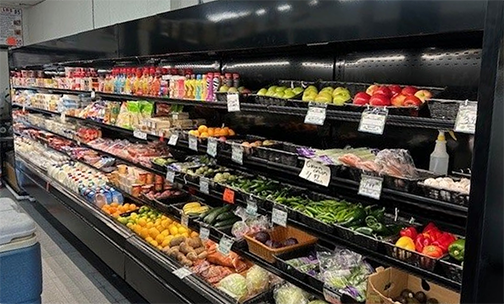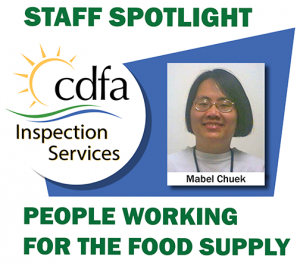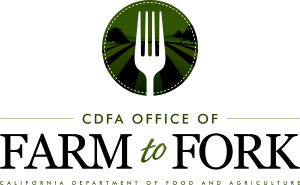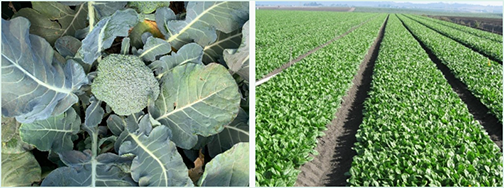CDFA’s Fertilizer Research and Education Program (FREP) has announced $1.15 million in awards to five new projects. The projects will advance California growers’ understanding and implementation of improved nutrient and irrigation management practices.
This funding is a result of the 2024 competitive FREP Grant Program.
Summary of Funded Projects:
Monitoring and Assessing Variability of Nutrient Status in Almond Orchards with Hyperspectral Satellite Imagery Empowered by Artificial Intelligence
Yufang Jin, Patrick Brown and Alireza Pourreza, University of California (UC), Davis
FREP Grant funding: $249,999
This Central Valley-based project will develop practical and cost-effective remote sensing approaches to mapping leaf tissue nutrient status that will help almond growers optimize nutrient management. The researchers will create models that analyze leaf samples using hyperspectral satellite imagery to understand the spectral response of almond leaves at different nutritional contents. The project aims to lay the groundwork for developing aerial and remote strategies that can supplement traditional leaf sampling to provide faster, more predictive and spatially accurate nutrient mapping.
Development of Three Citrus Modules in the Decision Support Tool CropManage for Orange, Mandarin, and Lemon
Ken Miller, Formation Environmental; Donald Ikemiya, Kaweah Basin Water Quality Association; and Michael Cahn and Manpreet Singh, UC Cooperative Extension
FREP Grant funding: $224,127
This project will refine three preliminary citrus modules for CropManage, a UC Cooperative Extension free, online support tool that provides nitrogen and irrigation recommendations to growers. The project will use nitrogen, water, satellite and drone-based imagery data collected from orange, mandarin and lemon orchards. Field data, as well as data-driven modeling, will be used to calibrate and test the modules before releasing them to the public. Once developed, outreach to citrus growers will be provided through CropManage workshops and field days.
Determination of Crop N-Removal Coefficient Values for the Imperial and Coachella Valleys Cropping Systems
Ali Montazar and Richard Smith, UC Cooperative Extension; and Daniel Geisseler, UC Davis
FREP Grant funding: $225,000
This project will develop crop nitrogen removal coefficient values for 10 major annual and perennial commodities In the Imperial and Coachella valleys that account for more than 70 percent of regional crop acreage. In addition to documenting seasonal nitrogen applied and assessing plant uptake and nitrogen removal in the harvested product, the project will gather similar information on phosphorus and potassium for the 10 commodities. Results will be disseminated to growers through workshops and at meetings of a local coalition, the Farm Bureau and a grower association.
Equity in Nutrient Management Education on the Central Coast of CA
Nathan Harkleroad, Agriculture and Land-Based Training Association (ALBA)
FREP Grant funding: $225,000
In the Central Coast counties of Monterey and San Benito, Nathan Harkleroad will lead an outreach project that focuses on educating primarily Spanish-speaking, socially disadvantaged organic growers about soil fertility, plant nutrition and irrigation management techniques through ALBA’s farmer incubation program. Additionally, ALBA will work with Monterey and San Benito resource conservation districts to provide technical assistance to ALBA graduates to implement these practices in their farming operations. ALBA will also work with FREP to translate into Spanish FREP’s California Crop Fertilization Guidelines used in ALBA’s curriculum.
A Science-Based and Interactive Website for Nutrient Management in Organic Crop Production
Daniel Geisseler, UC Davis
FREP Grant funding: $225,001
Daniel Geisseler will create a website that summarizes California-based research on nutrient availability in organic annual cropping systems. The site will include an online, interactive nitrogen, phosphorous, and potassium calculator for major annual crops. This project will build on an available calculator that allows users to estimate the mineralization rates of certain organic amendments by conducting replicated field trials on commercial organic fields in the Sacramento Valley and on the Central Coast. Results from the trials will be used to validate the calculator and address existing knowledge gaps. Once completed, the website and online calculator will be publicized at grower meetings and workshops, conferences that draw organic growers and consultants, and on the FREP website.
Since 1991, FREP has awarded $31 million to 276 research, outreach and demonstration projects focused on nutrient and irrigation management in many of California’s important and environmentally sensitive cropping systems. Click here to view the FREP Research & Project Database. See the Crop Fertilization Guidelines for tips on how to improve nutrient management, based on information gleaned from research.
Click here to view this original CDFA news release.










